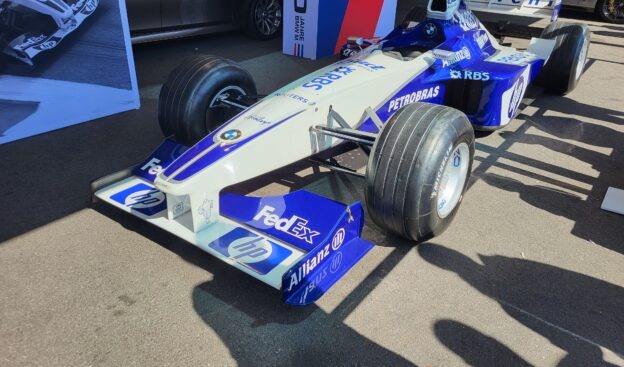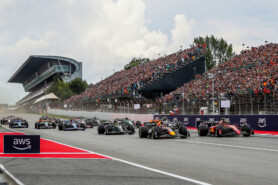From Aerodynamics to Engine Power: The Science Behind F1 Racing Cars

Formula One, or F1, is known for its high-speed racing, cutting-edge technology, and precision engineering. Each year, millions of fans tune in to watch the world's fastest drivers compete in some of the most advanced racing cars on the planet. But what makes these cars so special? From aerodynamics to engine power, there is a science behind F1 racing cars that makes them stand out from the rest. In this article, we will delve into the world of F1 racing and explore the fascinating science behind these incredible machines.
The Importance of Aerodynamics in F1 Racing Cars
Aerodynamics plays a crucial role in the performance of F1 racing cars. The car's shape, the wings' angle, and the air intakes' placement are all designed to reduce drag and increase downforce. Reducing drag is essential to maximising speed while increasing downforce helps keep the car firmly on the track, especially when taking corners at high speed.
To achieve this, F1 racing cars are designed with a low profile and a sleek, aerodynamic shape. The front and rear wings are also designed to create downforce, with the angle of the wings adjustable to suit different track conditions. The air intakes are also carefully placed to ensure maximum airflow to the engine, providing the necessary cooling to keep the car running at peak performance.
But aerodynamics is not just about the shape of the car. The underside of the car is also designed to create downforce, with a complex network of channels and diffusers that help to channel air towards the rear of the car. This creates a low-pressure area under the car, which helps to suck it down onto the track and increase its grip.
In short, aerodynamics is a critical factor in the performance of an F1 racing car. Thus, it is also invaluable to bettors who engage in betting on F1 racing. So, before you bet at Lottoland UK sportsbook or any other UK-regulated bookmaker, understanding the Aerodynamics in F1 cars and engine power features may offer vital clues as to where bettors should place their bets.
Understanding the Chassis and Suspension
Chassis and suspension components of an F1 racing car are absolutely critical to its performance. The chassis serves as the core structure, supporting all other components. Carbon fiber material offers both strength and lightweight construction qualities to withstand incredible forces generated during races.
Suspensions connect wheels to chassis, and play an essential role in car handling and performance. F1 racing cars utilize push-rod and pull-rod suspension systems designed by F1 engineers in order to be as light and strong as possible while still meeting all strength and stiffness requirements.
Adjustable suspension features enable drivers to precisely tailor handling characteristics to different track conditions, through adjustable dampers, springs and anti-roll bars - offering more or less grip depending on circumstances.
Simply stated, an F1 racing car's chassis and suspension systems are critical elements. They must withstand the extreme forces generated during races while remaining lightweight enough for optimal handling and performance.
The Role of Engine Power in F1 Racing Cars
Of course, no discussion of F1 racing cars would be complete without mentioning engine power. F1 racing cars are powered by some of the most advanced engines on the planet, capable of producing over 1000 horsepower. These engines are typically V6 turbocharged units, which are designed to be as efficient and powerful as possible.
The engines are also designed to be as light as possible, with many components made of lightweight materials such as titanium and carbon fiber. This allows the car to accelerate more quickly and reach higher top speeds.
But engine power is not just about raw horsepower. F1 racing cars also use advanced hybrid systems, which recover energy during braking and store it in a battery. This energy can then be used to provide an extra boost of power during acceleration, allowing the car to overtake other cars or gain an advantage on the straights.
In short, engine power is a critical factor in the performance of an F1 racing car. The engine must be powerful, efficient, and lightweight, allowing the car to accelerate quickly and reach incredible speeds.
Advanced Technologies Used in F1 Racing Cars
F1 racing cars are some of the most advanced machines on the planet, and they use a wide range of cutting-edge technologies to maximize their performance. One of the most important of these is telemetry, which allows engineers to track the car's performance in real-time and make adjustments as necessary.
Telemetry systems can measure everything from engine temperature to tire pressure, allowing engineers to fine-tune the car's performance to suit different track conditions. This data is transmitted back to the pit lane, where engineers can analyze it and make the necessary adjustments.
Another important technology used in F1 racing cars is the Kinetic Energy Recovery System (KERS). This system recovers energy during braking and stores it in a battery, which can then be used to provide an extra boost of power during acceleration.
F1 racing cars also use advanced aerodynamic simulation software, which allows engineers to design and test different aerodynamic configurations before building the car. This helps to ensure that the car will perform as expected before it is even built.
In short, F1 racing cars use a wide range of advanced technologies to maximize their performance. These technologies allow engineers to monitor and adjust the car's performance in real-time, recover energy during braking, and design and test different aerodynamic configurations before building the car.
Conclusion
In conclusion, F1 racing cars are some of the most advanced and sophisticated machines on the planet. From aerodynamics to engine power, every aspect of their design is carefully considered to maximize their performance and speed. As a result, F1 racing has had a significant impact on the automotive industry, driving innovation and paving the way for more sustainable transportation in the future. With new technologies and innovations emerging all the time, the future of F1 racing looks brighter than ever.
✅ Check out more posts with related topics:












